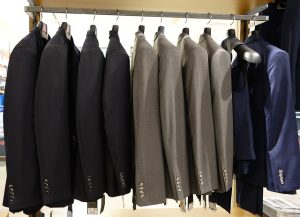By Retailist Editorial Team
Luxury brands have always been known for their exclusivity, premium quality, and exceptional customer service. However, with the rise of technology, the definition of luxury is undergoing a significant transformation. Luxury brands are now incorporating technology into their stores and online shopping experiences to provide customers with a more immersive and personalized experience.
Chanel and Louis Vuitton are two examples of luxury brands that have embraced technology to enhance their retail offerings. Chanel has introduced augmented reality technology in its stores, allowing customers to try on virtual versions of its products and see how they look in real-time. Louis Vuitton has also introduced virtual try-on technology in its stores, allowing customers to see how its products look on them without physically trying them on.
In addition to incorporating technology in their stores, luxury brands are also using technology to enhance their online shopping experiences. Chanel and Louis Vuitton have both launched online stores, providing customers with the ability to purchase products from the comfort of their homes. They have also introduced augmented reality technology in their online stores, allowing customers to see how products look on them before making a purchase.
The digitalization of luxury retail is changing the face of high-end shopping. Customers are now able to experience luxury products in a more immersive and personalized way, resulting in a more enjoyable shopping experience. With the integration of technology, luxury brands are able to provide customers with a seamless shopping experience, whether they’re shopping in-store or online.
In conclusion, the digitalization of luxury retail is a significant trend in the retail industry. Luxury brands like Chanel and Louis Vuitton are incorporating technology into their stores and online shopping experiences, providing customers with a more immersive and personalized shopping experience. The integration of technology is transforming the definition of luxury and changing the face of high-end shopping.
*this article may include affiliate and links to retail and brand partners
Related Articles

Hexnode CEO on how the “Holiday Illusion” is Masking the Risks of Retail’s Seasonal Workforce
The danger of seasonal hires is magnified not just by who is accessing the network, but when they are doing it. Sophisticated threat actors possess a deep understanding of the retail operational calendar.

The New Frugality: How Inflation and Tariffs Are Reshaping Consumer Spending
One of the most telling shifts is how shoppers approach decision-making. Where convenience once dominated, consciousness now plays a larger role. People are researching more before making a purchase, comparing prices across multiple platforms, and questioning whether they really need the product in the first place.

Embracing new concepts vs the return to brick-and-mortar
Balancing the return to physical retail and the development of new technologies to enhance customer experience and drive operational efficiency for long-term success.
Enartis to Acquire Parsec in Winemaking and Retail Deal
The deal will bring Enartis and Parsec together to help wineries manage every part of production more easily and efficiently, from grape to bottle.


 for the latest news and job opportunities in retail tech
for the latest news and job opportunities in retail tech 